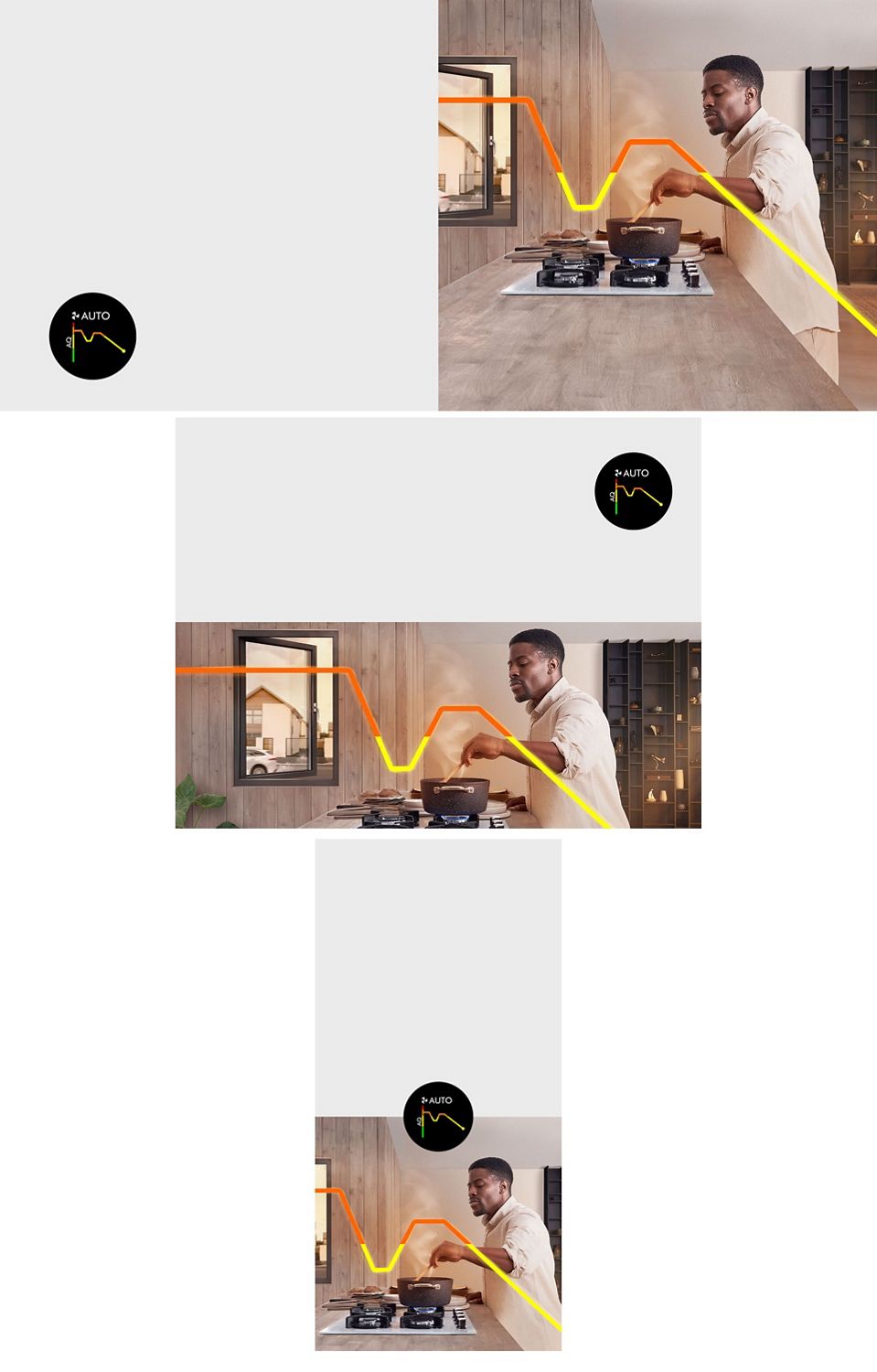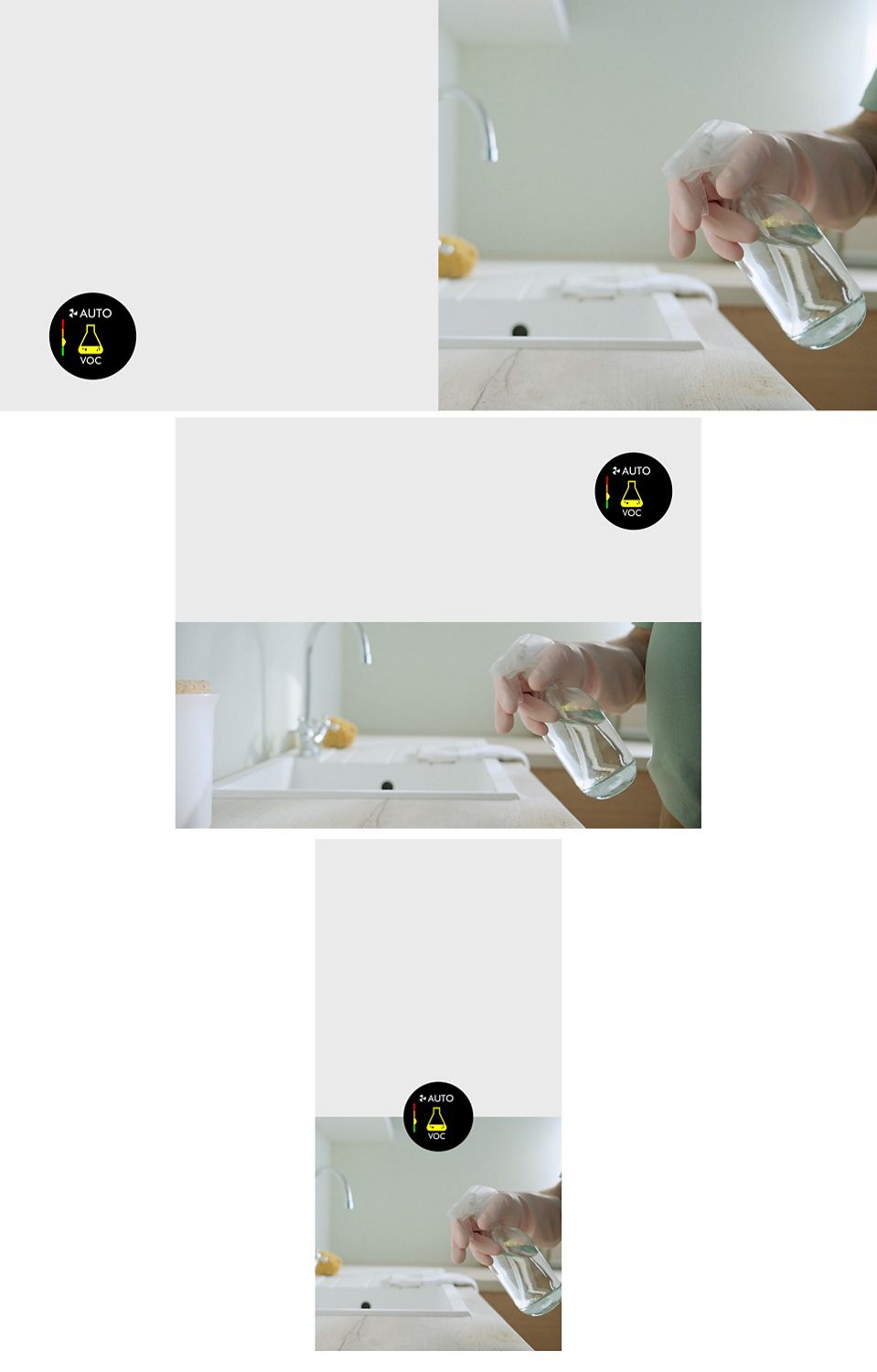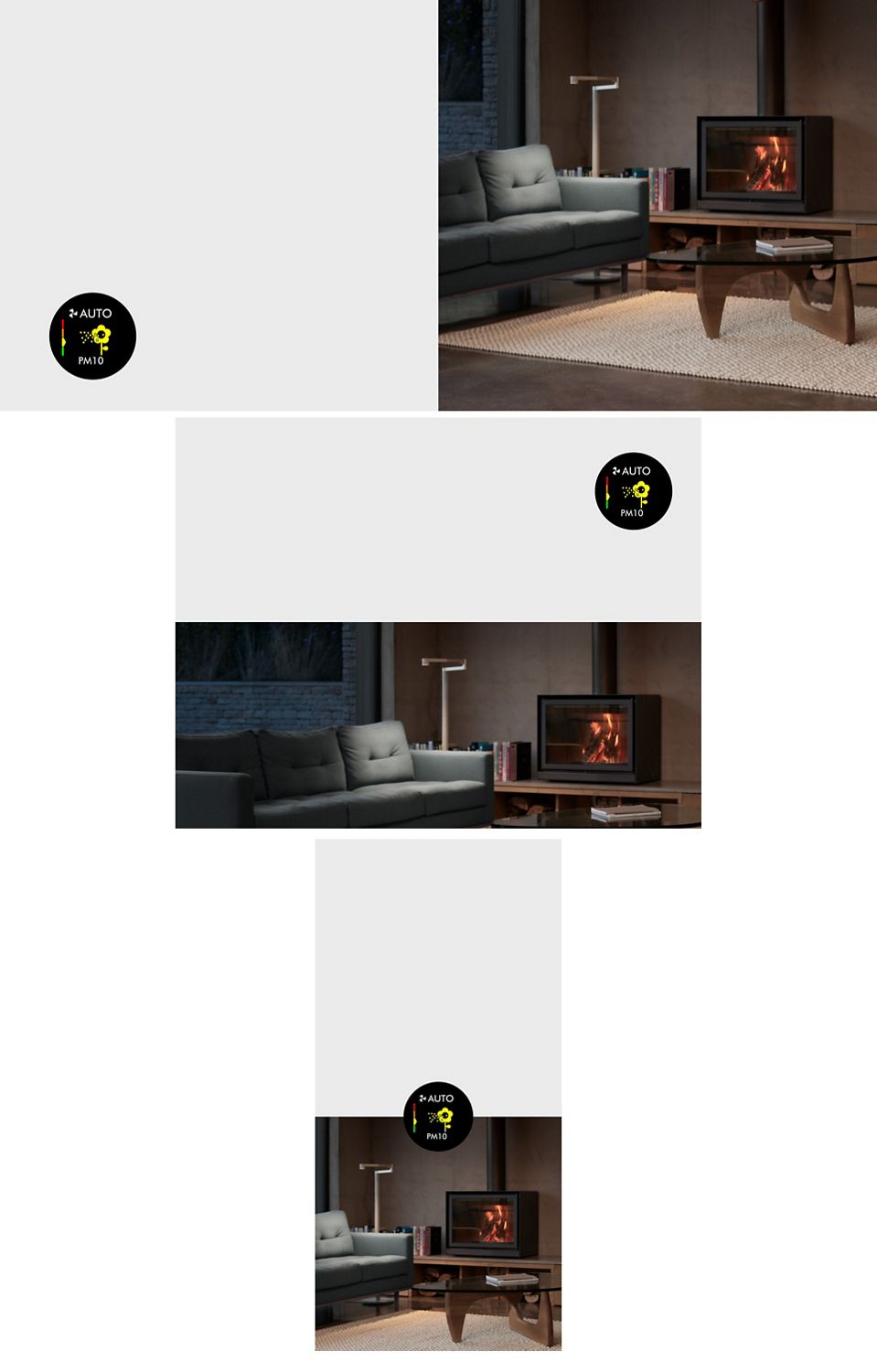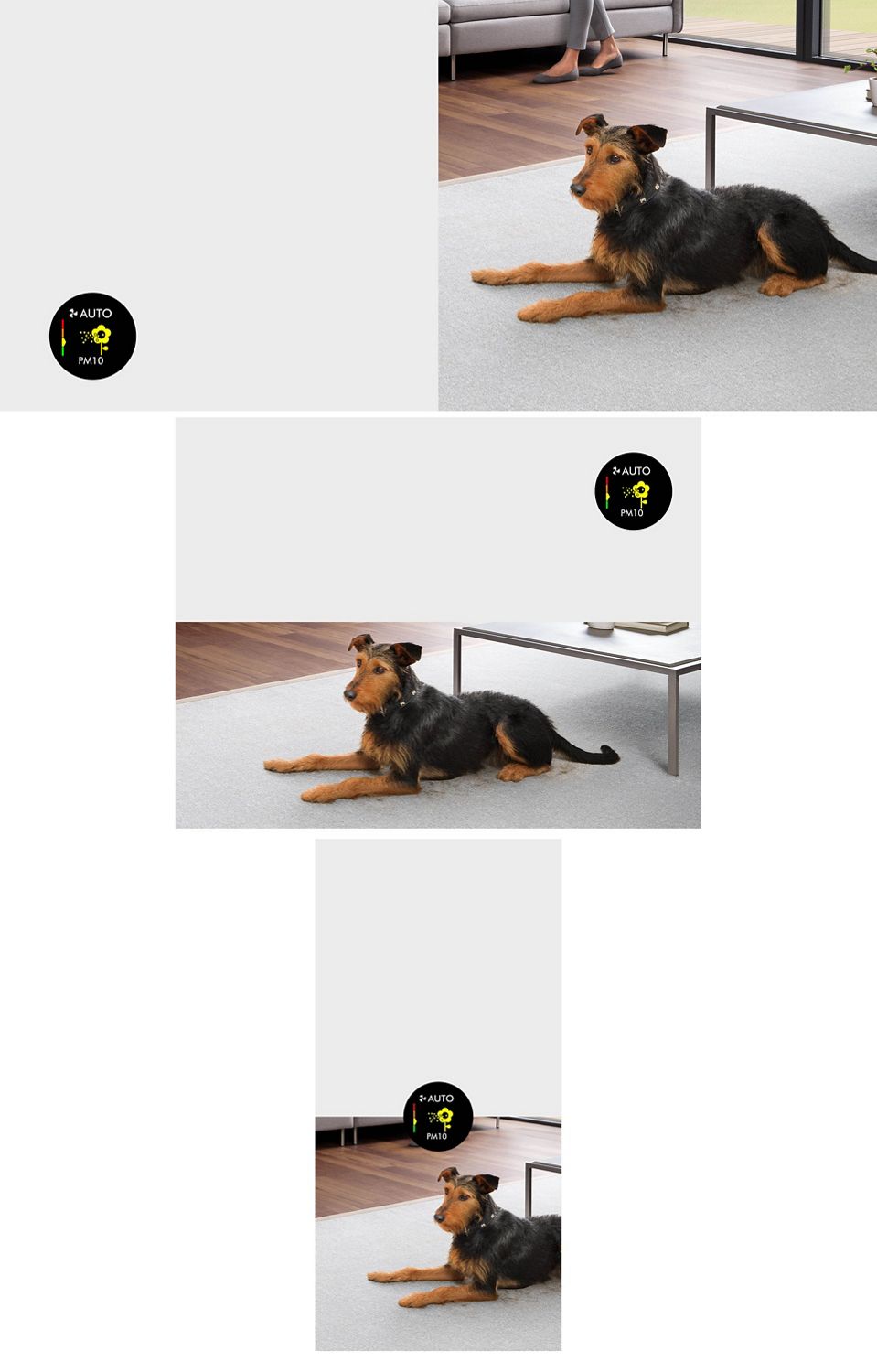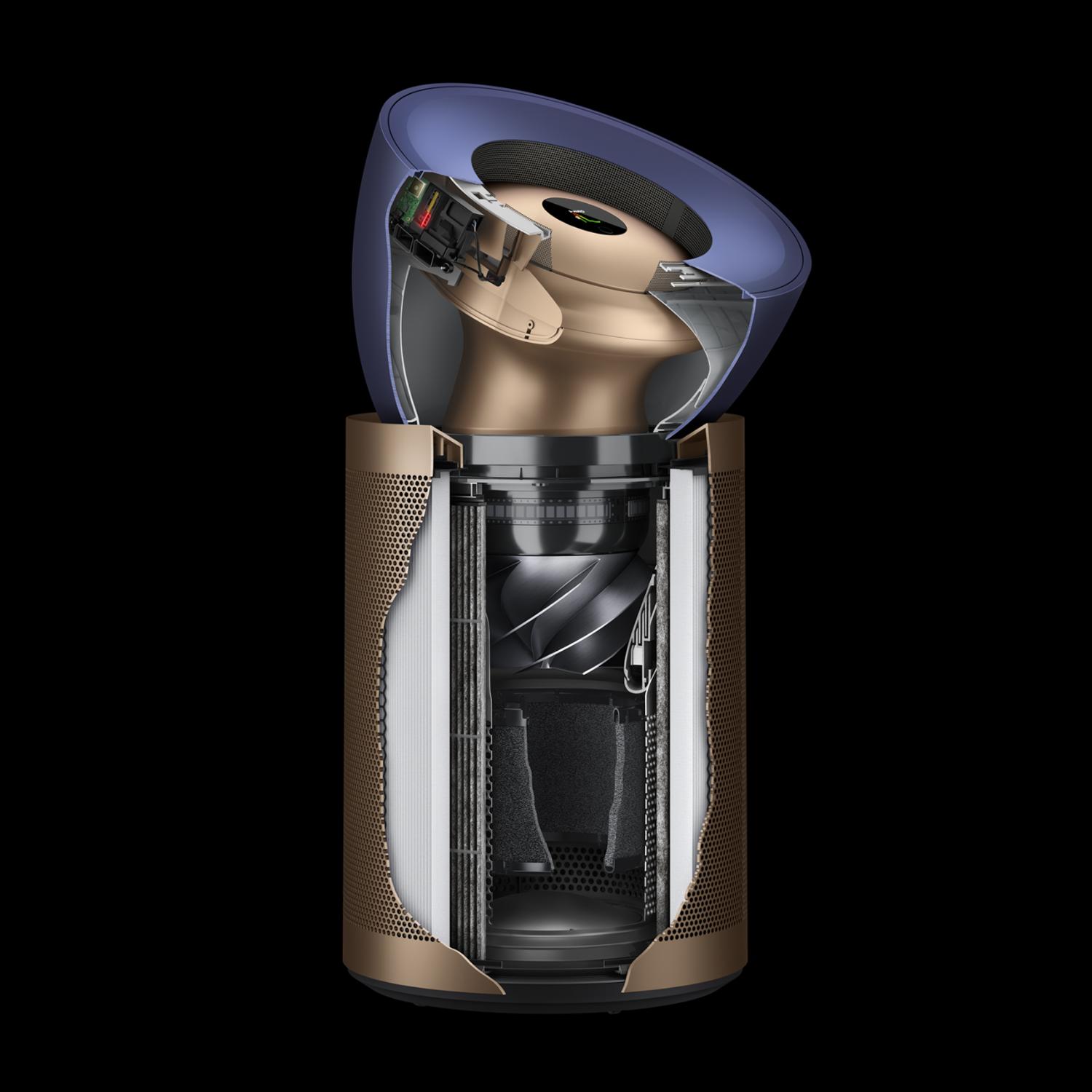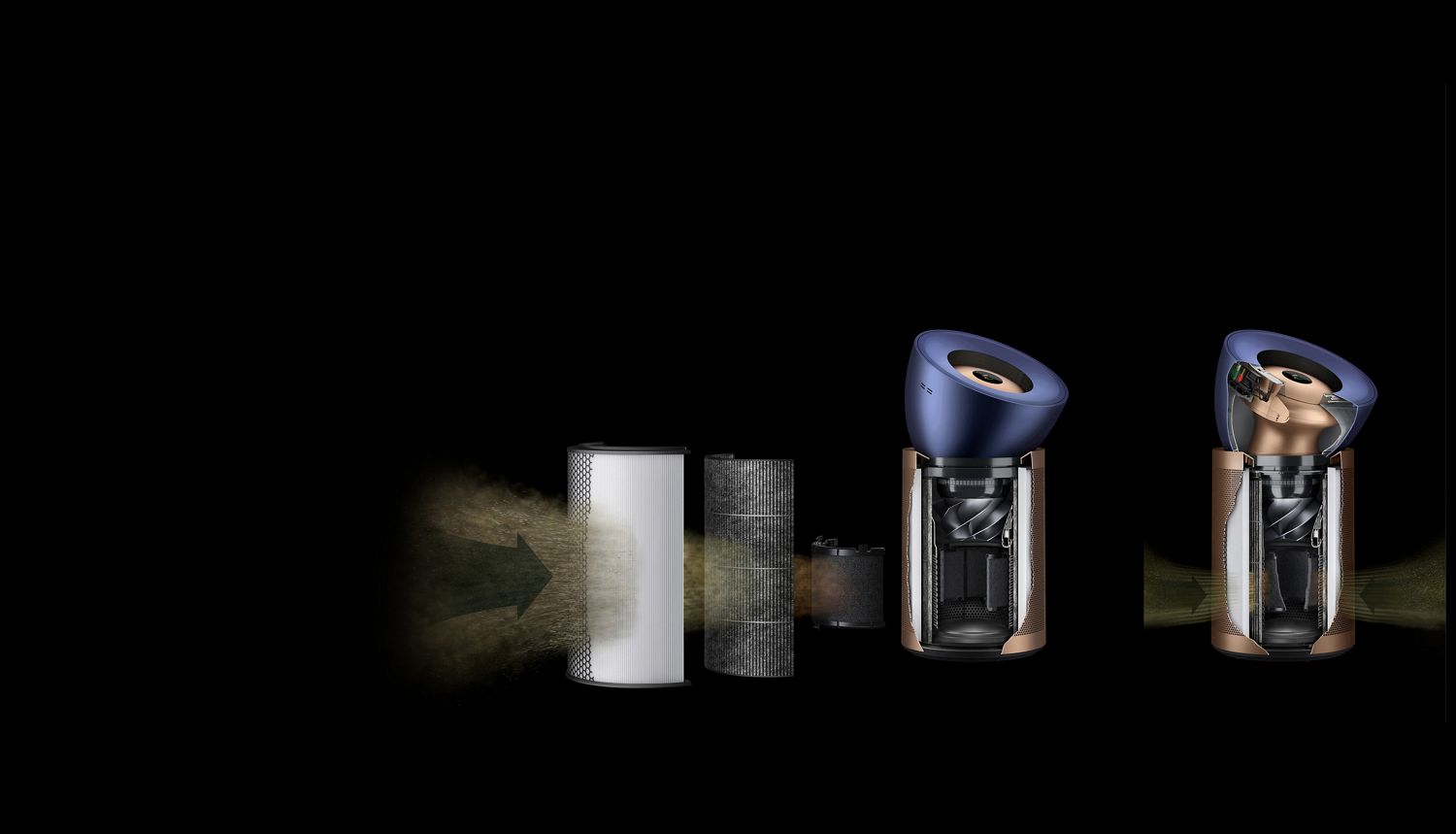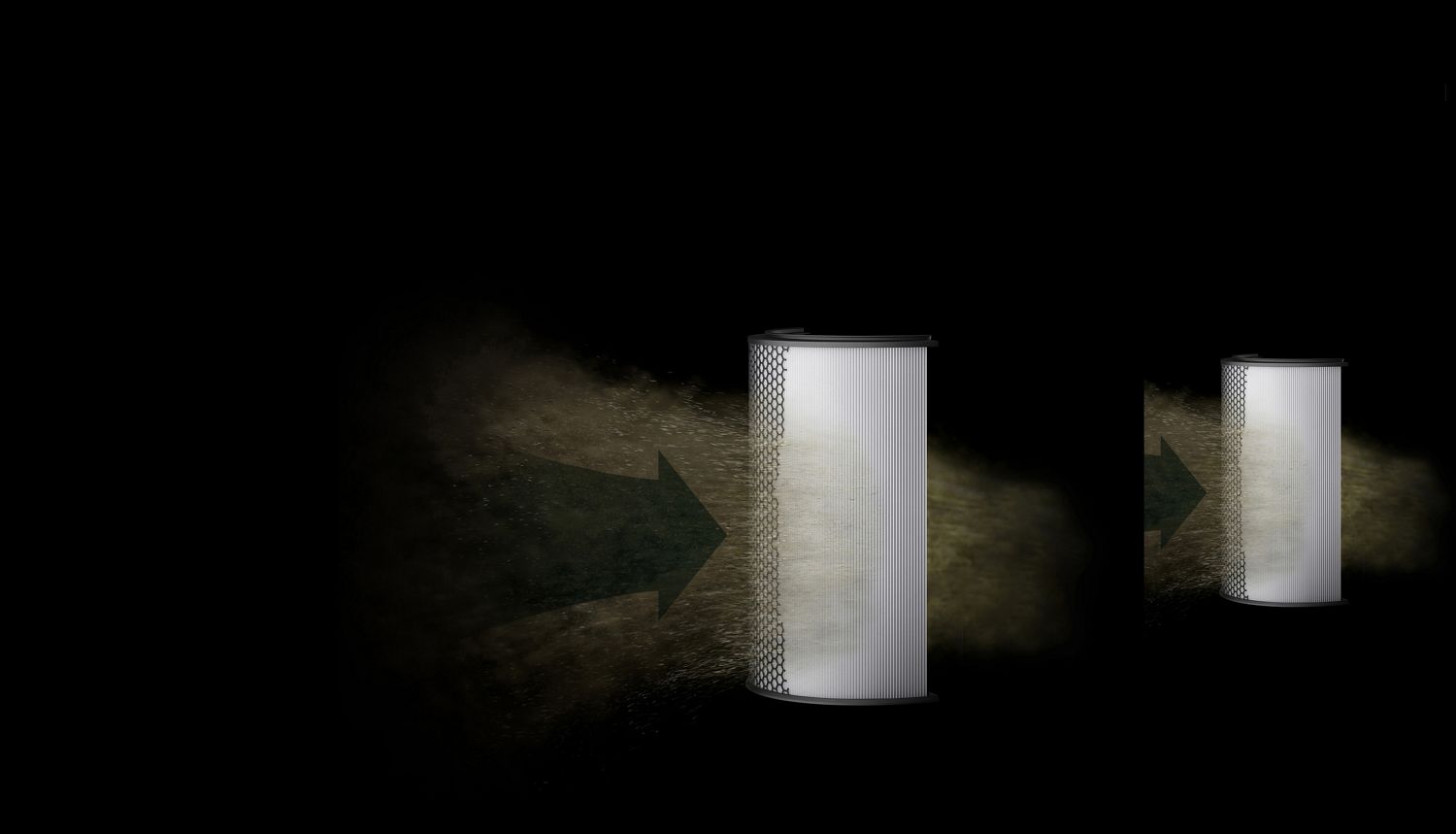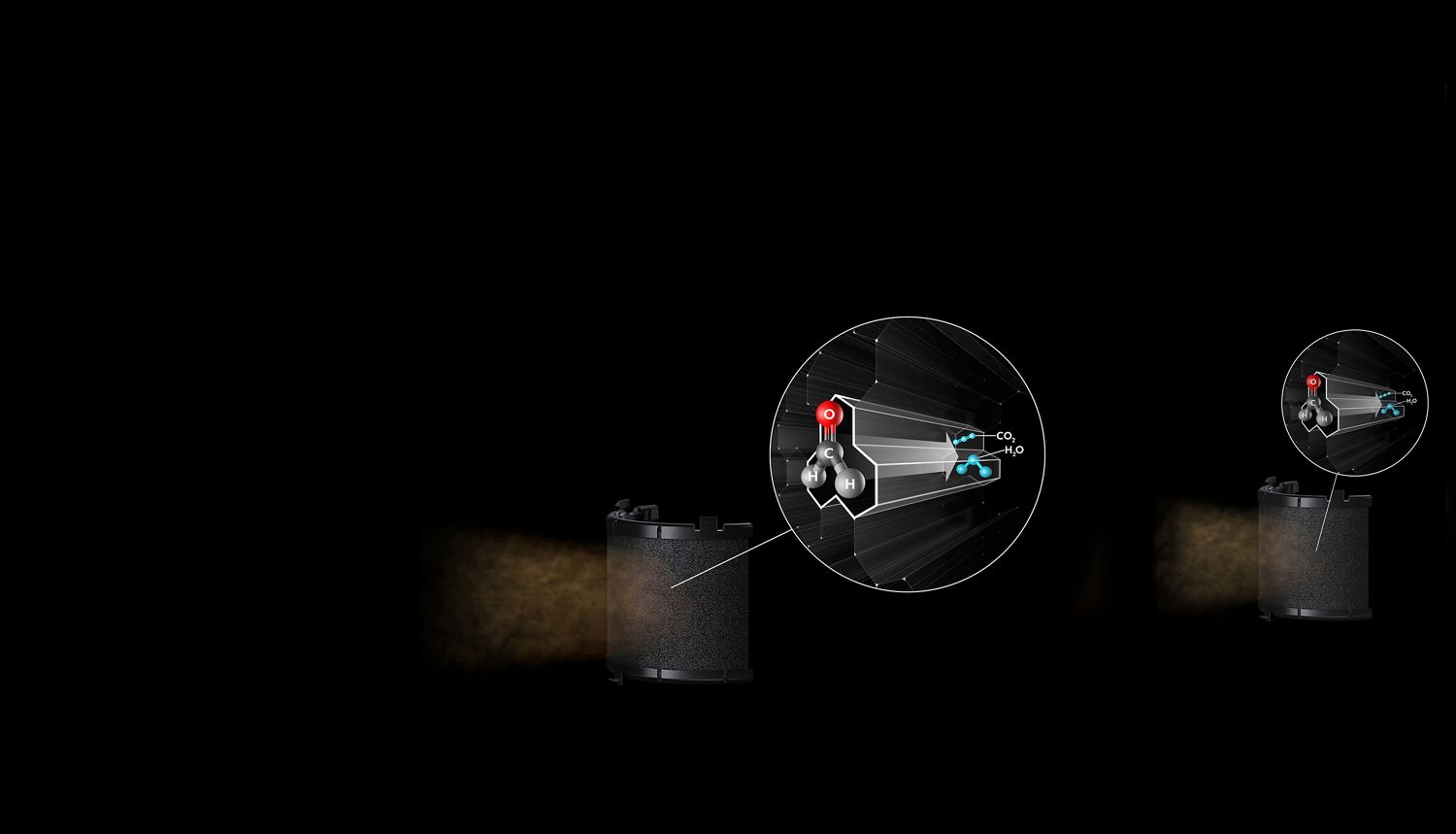Our most powerful and advanced air purifier
-
Cools you with purified air
Projects a powerful stream of purified airflow to keep you cool, whatever you’re doing. Or in Breeze mode creates the refreshing feeling of being outdoors.
-
Acoustically engineered for light sleepers
In Night mode, the dimmed display and 88% quieter fan³ lets you breathe cleaner air and sleep peacefully.
-
Dyson’s most advanced odour remover
As well as capturing invisible, odourless pollutants and allergens including pollen, it’s also our most advanced purifier for removing unpleasant household smells.
Cone aerodynamics
This drives two high-velocity streams of purified air over the machine's dome, which coalesce into one powerful jet delivering more than 80 litres of purified air per second. To purify large spaces, quietly. Or cool you, when required.
Sensing. Filtration. Projection.
Three essentials to look for in an air purifier

Real-time air quality diagnosis
In Auto mode, our integrated sensors detect pollutants from around the room and analyse air quality in real time, cross-checking the data every second, then automatically trigger purification, if required.
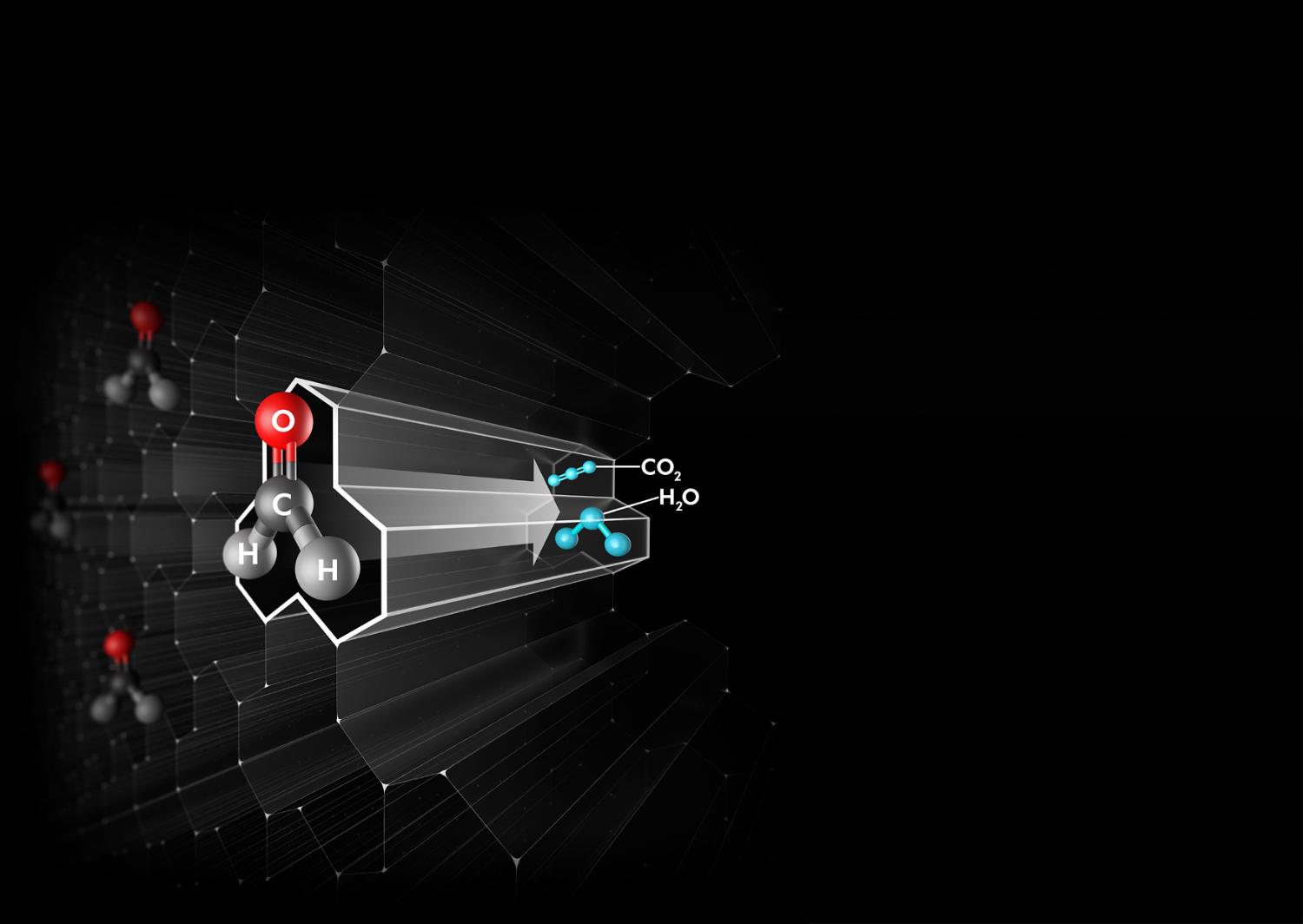
-
Formaldehyde: the invisible indoor pollutant
Formaldehyde is often associated with the familiar smell of fresh paint, or the unboxing of new furniture. It's a colourless, flammable and potentially harmful gas used in some building materials and household products. Sources can include fabrics found in flooring and furniture, glues, paints, varnishes, air fresheners, and household cleaners.
-
How to maintain cleaner air during home renovations
Moving and home makeovers involve new furniture and paint, which could add to the levels of formaldehyde in your home. Here's how to maintain cleaner indoor air when moving, decorating or renovating.

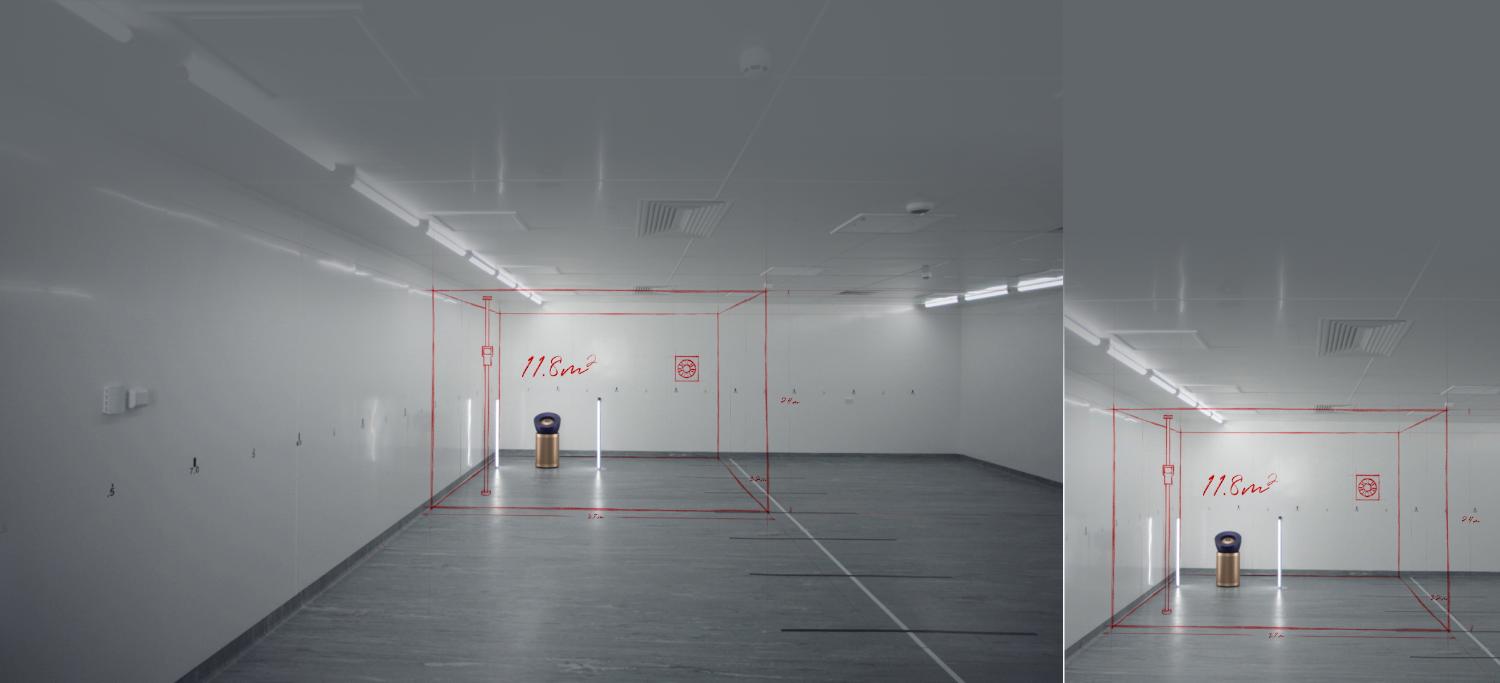


Reviews powered by Bazaarvoice
Dyson Purifier Big+Quiet Formaldehyde BP03 Purifying fan (Nickel/Blue)
Overall rating
Frequently asked questions
While our current generation purifiers circulate clean air around the whole room¹⁰, the Dyson Purifier Big+Quiet projects air over 10 metres, creating the circulation power to purify large spaces.¹ Featuring our largest ever filtration system, the purifier captures 99.95% pollutants², gases³ and destroys formaldehyde.⁵ It’s acoustically engineered to operate quietly – even at its highest power setting.
We've tested the Dyson Purifier Big+Quiet extensively – to ensure the sensors, filtration system and motor work together to purify a large living space. It has the projection power to purify spaces up to 100m2.¹
We’ve re-engineered our purifiers to deliver three key features to purify a whole room evenly.¹ Long range projection creates the circulation power to draw even-distant pollutants back to the purifier. An integrated sensor system accurately detects and reports pollutants. Finally, an advanced HEPA H13 grade filtration system captures gases³ and ultra-fine particles,² destroying formaldehyde.⁵ Purified air is then projected back into the room and the cycle repeats.
Formaldehyde is a colourless and potentially harmful gas that can be found in many household products and emitted for years. Sources of formaldehyde can include woods, glues, paints, varnishes, air fresheners, mattresses, household cleaners, and some fabrics found in household flooring and furniture.
The Dyson Purifier Big+Quiet Formaldehyde range traps formaldehyde in tunnels, breaking it down into water and CO2.⁵ This is done by a lifetime Selective Catalytic Oxidation filter which does not need replacing.
Dyson purifiers are optimal when left switched on in auto-mode. This allows the purifier to constantly monitor your air quality, and automatically sense and capture pollutants. It adjusts the airflow speed, only purifying when needed.¹¹ The Dyson Purifier Big+Quiet range offers enhanced energy efficiency, providing nearly double the clean air delivery rate per watt versus our current generation purifiers.¹²
-
Allergens
An allergen is a substance that can cause an allergic reaction by triggering the body’s immune system. Common indoor allergens include dust mite droppings, pet dander, mould, and pollen.
-
Bacteria
Microscopic, single-celled organisms that exist in their millions, in every environment. Not all bacteria are harmful, but some can have adverse effects, such as E. coli.
-
Benzene
Benzene is colourless, flammable liquid produced by both natural and man-made processes. It’s a natural part of crude oil, gasoline, and cigarette smoke. Indoors, it comes from products such as glues, paints, furniture wax, and detergents.
-
Carbon dioxide (CO₂)
A colourless greenhouse gas, which comes from the extraction and burning of fossil fuels. Increased CO₂ levels can impact cognitive function.
-
Formaldehyde
This colourless, flammable gas is used in some building materials and household products. Sources can include some fabrics found in flooring and furniture, glues, paints, varnishes, air fresheners, and household cleaners.
-
H1N1 virus
This subtype of Influenza A virus, also known as swine flu, caused a global flu outbreak. H1N1 produces respiratory infectious diseases in humans and pigs. Symptoms can be similar to seasonal flu.
-
HEPA 13
HEPA (High Efficiency Particulate Air) is an air filter efficiency standard and a measure of a filter’s performance. To achieve this standard, filters must meet a minimum of 99.97 per cent particle removal at the most penetrating particle size.
-
Humidification
A process of increasing air moisture content through the addition of water vapour or steam. Humidifiers can add moisture to the air in dry conditions, creating a more comfortable indoor environment when needed.
-
Microns
Airborne particles are usually described in microns. One micron is equal to one-millionth of a metre. The human eye can see debris and dust that are approximately 25 microns in size.
-
Nitrogen dioxide (NO₂)
Nitrogen dioxide is a liquid below 21.2 °C and a gas at higher temperatures. It is toxic to humans in both states. Gas stoves and space heaters are the most common indoor sources of NO₂ emissions. Other sources include improperly vented furnaces and water heaters.
-
Pet dander
Pet dander is made up of tiny particles of skin, saliva and urine, shed by animals with fur or feathers. Pet dander lingers in the air before settling on surfaces such as furniture, bedding, and fabrics. Exposure to these airborne particles can trigger allergies.
-
Particulate matter (PM)
Particulate matter contains microscopic solids or liquid droplets, measured in microns. Indoor PM can be generated through many day-to-day activities such as cooking, cleaning, and the burning of candles and fires.
-
Purification
The process of making something free of any contaminants or physical impurities. Air purification is designed to filter the air in your home – removing pollutants such as dust, allergens and viruses.
-
Volatile organic compounds (VOCs)
Volatile organic compounds are potentially harmful gases found in many household products. Common sources include paints, varnishes, air fresheners, cosmetics, and cleaning products.
-
Pollen
Pollen is a powdery substance released from seed plants as part of their reproduction process. It typically appears from trees in the spring, grasses in the summer, and weeds in the autumn. Pollen grains are among the most common allergens.
-
House dust mites
Dust mites are tiny insects that commonly live in household dust. They are one of the biggest causes of allergies. Each gram of house dust contains approximately 1000 dust mites.
-
Aspergillus mould
A common name for a visible group of fungi, mould thrives wherever there is dampness – sending out millions of spores into the air. Exposure to mould occurs via inhalation, skin contact, or ingestion.

- 1 The ability of purifying a large room up to 100m2 (10m*10m) proven from a Computational Fluid Dynamics (CFD) modelling, with the purifier placed in a corner of the room running at the maximum flow and horizontal projection reaching 10 metres to fully mix the room. The projection distance was measured from internal flow reach testing under the maximum directional airflow. The actual performance in real life condition may vary.
- 2 Tested for filtration efficiency at 0.1 microns (EN1822, ISO29364).
- 3 Tested to JEM 1467 (acetic acid, acetaldehyde, ammonia), GB/T18801 (formaldehyde, benzene) and DTM-003282 (NO2). Gas capture rates vary.
- 4 Compared to absorption by the standard carbon filter in Dyson Purifier Big+Quiet Formaldehyde (BP03).
- 5 Third party full machine testing based on GB/T 18801-2022 formaldehyde cumulative clean mass testing with continuous injection until plateau of formaldehyde CADR is achieved. Results may vary in practice.
- 6 Particle challenge by DEHS oil specified in EN1822 within a chamber specified in ASTM F3150. Tested in Max Mode at IBR US, for whole machine efficiency above 99.95%.
- 8 App functionality may vary per market. Requires Wi-Fi and app enabled device. Standard data and messaging rates may apply. Requires iOS version 10 or above, or Android version 5 or above. Your mobile device must have Bluetooth 4.0 support.
- 9 Levels defined by Dyson based on scientific literature. Ventilation alert when CO2 levels are 1500ppm or above.
- 10 In maximum setting. Tested for air projection (DTM 801) and purification coverage in a 81m3 room (TM-003711).
- 11 In Auto mode.
- 12 Vs. TP09



